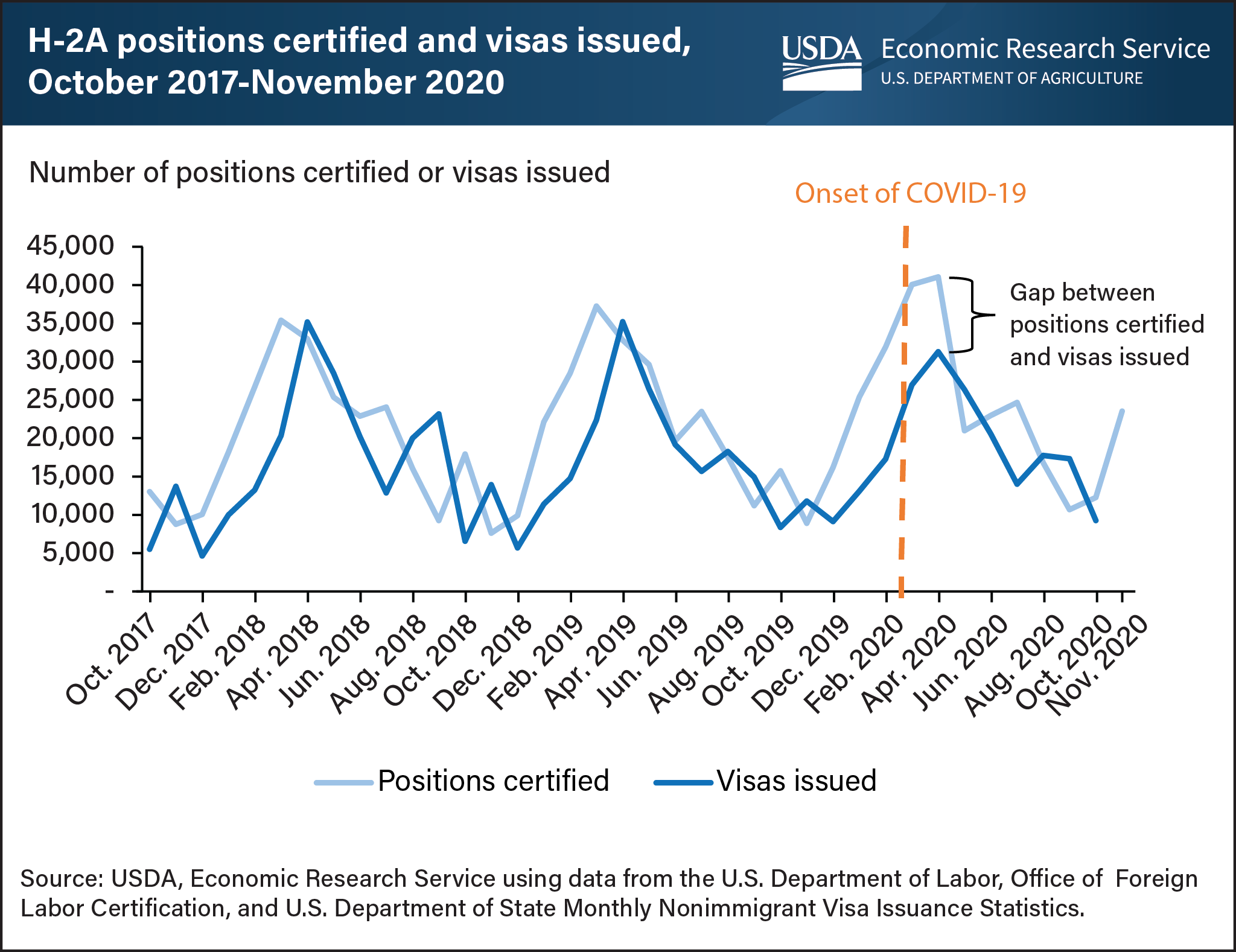Gap between H-2A positions certified and H-2A visas issued grew during COVID-19 pandemic
- by Skyler Simnitt and Marcelo Castillo
- 10/20/2021

The H-2A Temporary Agricultural Workers Program attracts foreign farmworkers on temporary work visas to fulfill short-term labor contracts. All positions to be filled with H-2A workers are first certified by the Department of Labor, then U.S. consulates issue corresponding visas. The number of positions certified each year generally exceeds the annual number of visas issued, in part because an H-2A worker may fill multiple positions on the same visa. At the onset of the Coronavirus (COVID-19) pandemic, temporary changes to H-2A program rules provided visa extensions to H-2A workers already in the country and allowed them to more easily switch to certified positions with other employers. In the first few months of the pandemic, the gap between positions certified and the number of visas issued grew. Position certifications typically peak in March, while visas issued peak a month later as workers begin work. In March and April 2020 combined, a record 81,000 positions were certified, and 57,000 visas were issued during the corresponding months of April and May. This difference is larger than previous years and suggests that proportionally fewer certified positions were filled with new H-2A entries in 2020. This chart first appeared in the USDA, Economic Research Service (ERS) report, Farm Labor Markets in the United States and Mexico Pose Challenges for U.S. Agriculture, published in November 2018, and has been updated through 2020. For more information on how H-2A visas have fulfilled seasonal labor requirements, see the ERS report Examining the Growth in Seasonal Agricultural H-2A Labor, published in August 2021, and the Amber Waves feature “Use of H-2A Guest Farm Worker Program More Than Triples in Past Decade,” published in September 2021.

